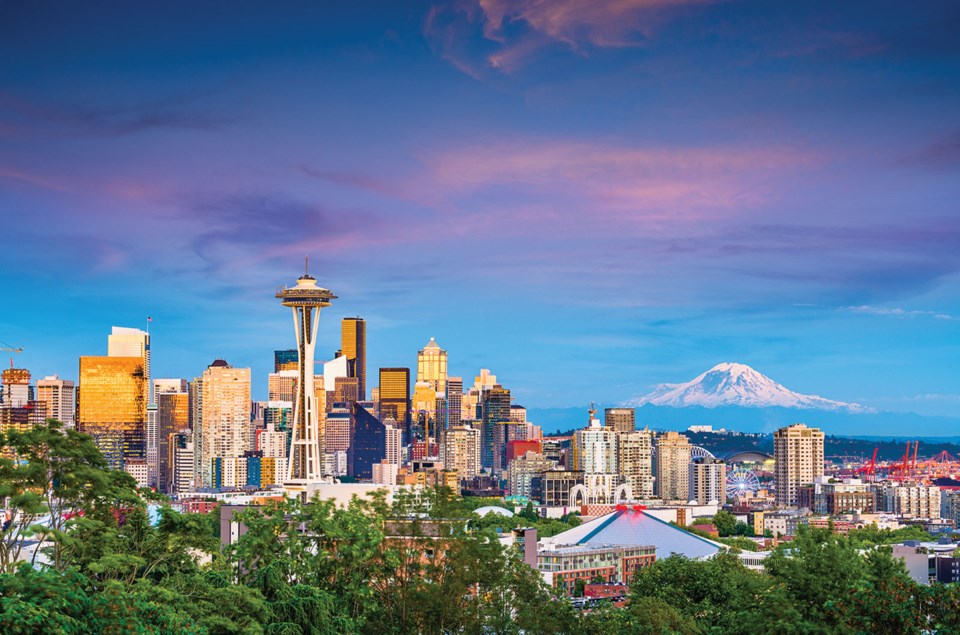Vancouver Mayor Kennedy Stewart apparently had a very productive visit to Seattle recently. In an interview during his visit, the mayor said he would like “to get a better understanding of how Seattle has built so much rental housing.”
The mayor is right to be curious: Seattle built 17,450 purpose-built rental units in 2018. A Seattle Times article from early 2019 gave telling examples of landlords offering incentives to tenants. One struck me in particular: “Two months free rent plus a $1,000 gift card if you move in within one week!”
Compare this with the near-zero vacancy rate in the City of Vancouver, where the Goodman Report counted only 1,364 new rental units built in the same year. Seattle is bigger than Vancouver, for sure, but it’s not 13 times bigger!
So Mayor Stewart is correct to be curious, but he is incorrect to look for the answer in Seattle. The 17,450 new rental units is the normal and expected free-market response to rising demand in a city of that size.
Instead of asking how Seattle has built so much rental housing, the mayor should be asking what Vancouver has done to prevent the same outcome.
It’s not rocket science. When the demand for apples goes up, normal people plant more trees. It takes a few years, but sooner or later there are enough apples to meet the higher demand.
But when the demand for rental housing in Vancouver increases, we don’t build more rental homes. On the contrary, we do everything we can to sabotage new supply:
• rent control;
• rental-only zoning used to “downzone”;
• a 12-year-old moratorium on the demolition of rental buildings in Vancouver;
• sales taxes on land purchase and on construction costs;
• school tax on development land while waiting for permits;
• years-long development review process; and
• hostile city councillors.
It’s hard to pick the biggest villain from the above long list, but let’s start with rent control. A recent paper on the topic published in the American Economic Review, the prestigious economics journal, uses data from San Francisco to find that “in the long run, landlords’ substitution toward owner-occupied and newly constructed rental housing not only lowered the supply of rental housing in the city, but also shifted the city’s housing supply toward less affordable types of housing that likely cater to the tastes of higher-income individuals.” The authors further conclude: “Taking all of these points together, it appears rent control has actually contributed to the gentrification of San Francisco, the exact opposite of the policy’s intended goal.”
It’s not just rent control. The B.C. government gave cities the power to introduce rental-only zoning. It was meant to ensure that new projects that promise to provide rental units, perhaps in exchange for a density bonus, keep their promise. This was supposed to be a way to incentivize new purpose-built rental development. Instead, cities like Burnaby, New Westminster and Victoria are considering or have already implemented rental-only zoning on existing buildings, without the consent of the owners and without an appropriate density bonus. This has exactly the opposite effect of the intended goal – it turns rental housing into a toxic asset. Most investors like to keep their capital away from such assets.
Okay, so we abuse current landlords because they are stuck with us. They cannot move their buildings elsewhere.
What really puzzles me is why we treat new development projects the same way. Rental-only zoning, even just the possibility of it, not only expropriates from the current owners but also ensures that we will not get a rental building on any property that does not already have one.
Development delays
The only possibility for an increase in rental supply is to redevelop existing rental buildings. But that has also been ruled out by a 12-year-old moratorium on demolishing rental buildings that covers over 95 per cent of Vancouver. In other words, we can neither add new rental buildings nor redevelop existing ones.
Applications to build new rentals can take years.
A recent Altus Group report shows that about one-third of units in rental development applications in Vancouver submitted in 2016 were still under review in 2019, as are nearly three-quarters of applications submitted in 2017.
So you wait two, three or more years for your development application to get reviewed, during which time you’re paying interest on the land purchase, property taxes and even the so-called school tax on the entire property. Sooner or later, usually much later, you may get to city council for final approval. That’s when you get yet another insult. Your project gets questioned, and possibly denied, because market rents are too high!
You read that right – we block new rental housing because we don’t have enough rental housing. This doesn’t just defy basic economics; it defies basic common sense.
So, Mayor Stewart, it is not surprising that Seattle got 17,450 new purpose-built rental units in 2018. What is surprising is that Vancouver got 1,364 new units, given how we treat current and new landlords at both provincial and municipal levels. If we keep this up, we’ll get zero next time.
Andrey Pavlov, PhD, is a professor of real estate finance in the Beedie School of Business at Simon Fraser University. His column is courtesy of the Goodman Report from Goodman Commercial Inc., Vancouver



